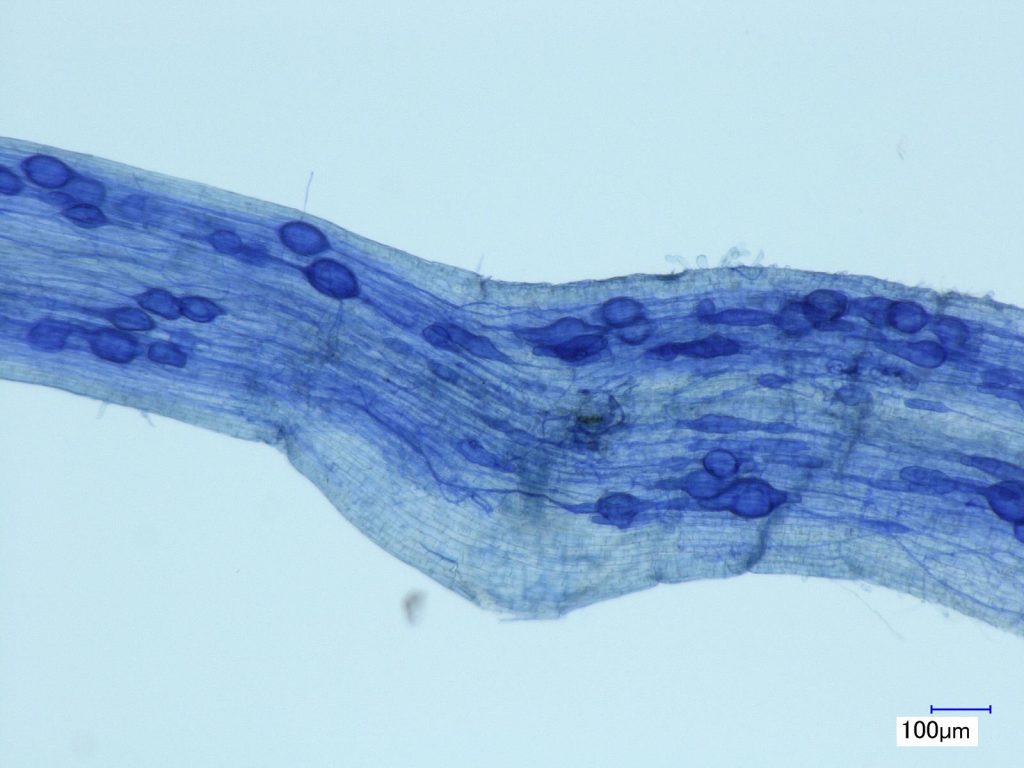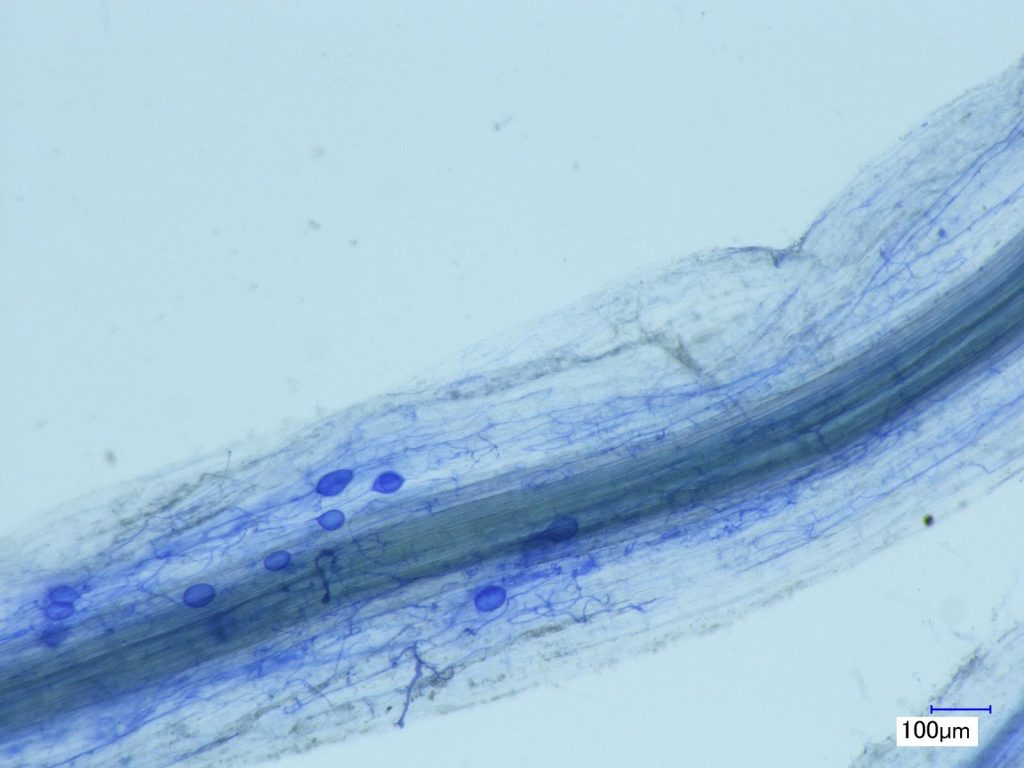Mycorrhiza
Microbial root symbionts as drivers of eco-evolutionary dynamics and long-term biodiversity–ecosystem functioning relationships in plant communities

Halle
Principle Investigator
+49 345 5585 221

Halle/Leipzig
Principle Investigator
+49 345 5585 225

Halle
PhD student
+49 345 5585 416

colonization in roots of Centaurea jacea
A mechanism that could explain why the relationship between biodiversity and ecosystem functioning (BEF) often becomes stronger over time is the co-adaptation developing between plants and arbuscular mycorrhizal fungi (AMF). AMF live in symbiosis with roots of the vast majority of today’s plant species, mobilizing and transferring mineral nutrients from the soil in exchange with carbon from the plants. Nevertheless, the short- and long-term responses of AMF diversity and community assembly to plant diversity are as unclear as the role of these responses in BEF. AMF specialists contribute to partitioning of resources among plant communities. On the other hand, by forming common mycelial networks, generalist AMF can facilitate resource sharing. Both effects could contribute to the increase of the BEF relationship over time.

colonization in roots of Rumex acetosa
Our subproject explores (1) whether ecosystem aging corresponds to co-adaptation between the AMF and plant partners; (2) how this co-adaptation affects AMF specialization and the strength of the symbiotic link; (3) whether the contribution of AM symbioses to the BEF relationship is contingent on soil history, plant history, or both; (4) whether the observed dynamics are specific to AMF within the soil fungal community and its further functional groups. Using molecular methods, we will assess the community structure of AMF in bulk soils and compare it to other fungal communities. In addition, symbiotic community structure, specialization of AMF and mycorrhization intensity will be determined using rhizosphere and roots of resident plant species, both in the Field Experiment and the Ecotron Experiment.
